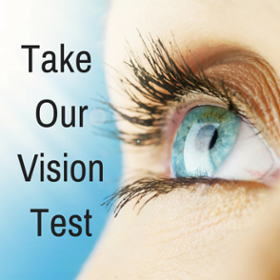
Stroke victims often sustain severe and even life-threatening injuries that require the immediate attention of medical professionals. Because of this, visual field deficits after stroke or brain injury can be overlooked early on while these more acute injuries are treated. Even if a patient does not perceive any problems with his or her vision, deficiencies may be present, and they can have an extensive impact on that patient’s life and rehabilitation efforts moving forward.
Within three months of a stroke or brain injury spontaneous recovery is possible, in other words some vision complications will clear up by themselves; however, it is estimated that this happens for only 5% of sufferers. Also, only 10% of patients ever develop effective compensatory techniques to regain efficient visual scanning. The vast majority of patients (~80+%) with homonymous visual field loss need specific intervention to enable them to regain efficient visual scanning and to improve their activities of daily living. Given this statistic it is clear that patients with vision disorders following stroke or brain injury need specific clinically supported therapeutic interventions to enable them to effectively develop more of a global vision.
What Is Saccadic Therapy?
Saccadic therapy is targeted at patients who have suffered a vision disorder such as a homonymous hemianopia and have additional difficulties with eye movements. They appear to have smaller saccade amplitudes, exploring more of the sighted regions rather than the blind areas, have a larger number of fixations and a lower ability to integrate information between the left and right hand side of their vision. Therefore, they have difficulties in becoming aware of the events at the side of their visual field loss and in grasping a scene as a whole
The primary goal of saccadic training is to improve visual search performance accompanied by more efficient oculomotor strategies, and to reduce visual disability as assessed by standardized questionnaires and behavioral measures. Benefits also include measures of improvements in navigation skills and object finding.
Saccadic training has historically taken place in either a rehabilitation center or clinic under direct physician supervision using high cost equipment, general programs that cover a range of conditions, or “pen and paper” techniques. This broad visual-search tasks approach to re-training a patient to make more efficient eye movements has been proven to be effective in most patients.
What Is NeuroEyeCoach?
NovaVision developed NeuroEyeCoach working with Professor Josef Zihl of the Max Planck Institute in Munich, Germany and Professor Arash Sahraie, Chair in Vision Science at the University of Aberdeen, Scotland. NovaVision’s objective was to provide an evidence-based, specific saccadic program that was cost-effective and flexible, allowing for both in-clinic and at-home use by patients.
NeuroEyeCoach evolved from Prof. Zihl’s extensive research on computer based saccadic training as an effective alternative to more traditional saccadic techniques. It is based on the findings of 14 studies covering 591 patients with homonymous visual field loss, and each aspect of the NeuroEyeCoach program is supported by the findings and clinical evidence in the studies.
NeuroEyeCoach is not a general therapeutic program but is specifically designed to help improve scanning and eye movement efficiency in patients who have visual disorders resulting from neurological brain damage often accompanied by visual field deficits. Research has found that specific computer based saccadic training is more effective than non-specific visual training using general programs, practice with reading, standard occupational therapy or developing coping strategies to improve visual overview and visual exploration. NeuroEyeCoach has been designed to have multiple levels of difficulty by manipulating target distractor similarity as well as distractor numbers allowing the clinicians to assess and improve the patient’s visual search performance. By providing the physician with a systematic protocol for them to change the task difficulty it provides a reliable measure of improvement, unlike some other programs that mix up different clinical conditions in their end goal.
The program is self-adaptive adjusting to the patients’ needs and stage of recovery, and is very user-friendly, and designed to require a minimal level of therapist supervision. Since patients can access this therapy directly over the Internet, it enables patients to continue the therapy at home after in-patient discharge, or carry out the therapy at home monitored on an out-patient basis. This flexibility is designed to achieve higher levels of compliance and completion of the therapy by patients, leading to their greater confidence in performing activities of daily living and better results overall.



